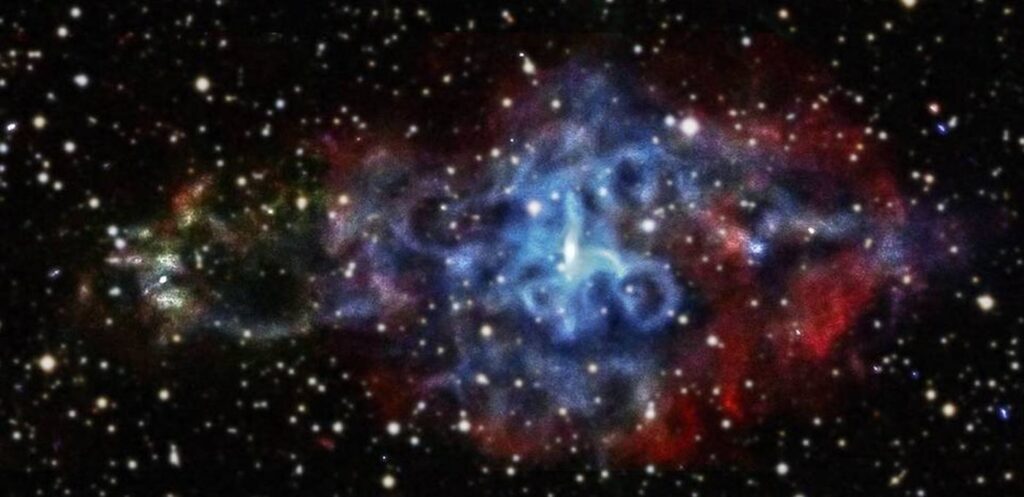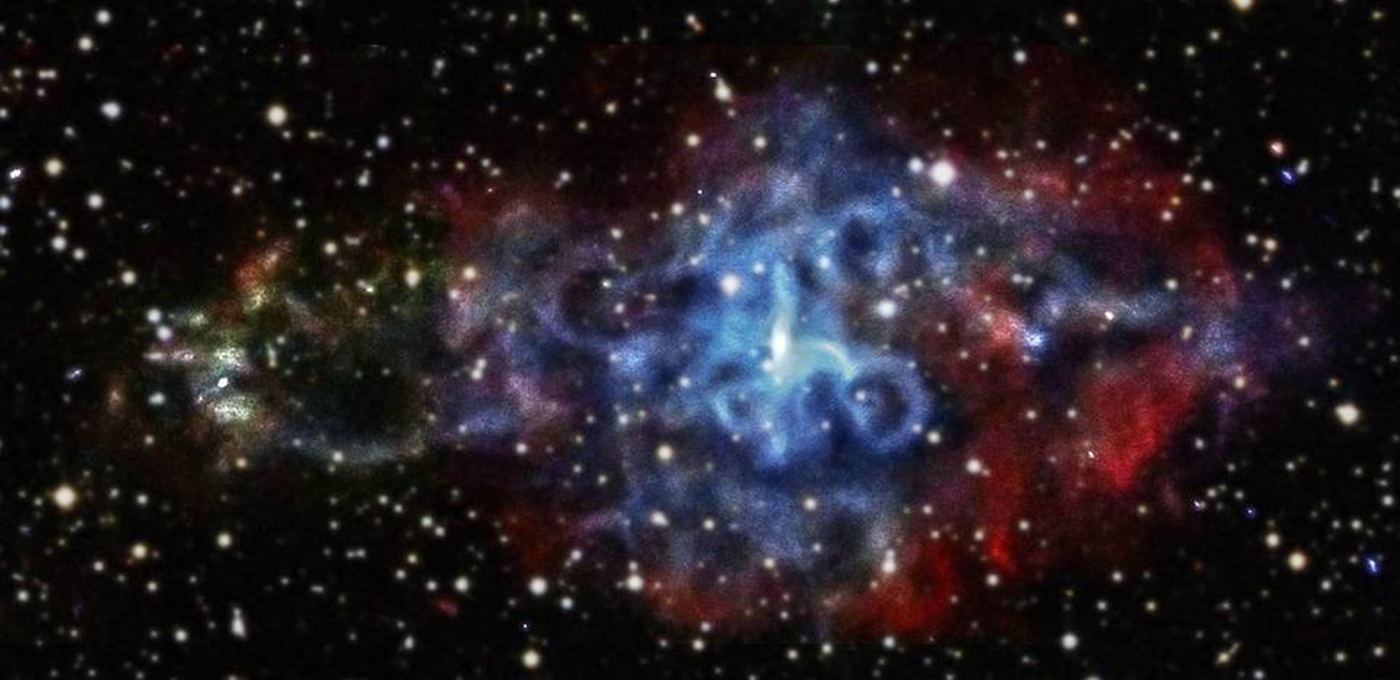
The Chinese have a long, ancient history of recording “guest stars”—suddenly bright stars that appear in the sky for a while but then dim and disappear.
Today we know these are rare, incredibly energetic supernova explosions from either massive stars or special, interacting binary systems that seed the Galaxy with heavy elements like iron and leaving behind neutron stars, pulsars, black holes and a gaseous remnant like the Crab nebula.
Now, a 900-year-old mystery on the true origins of the Chinese guest star of AD 1181 has finally been solved by an international team of astronomers.
The Laboratory for Space Research (LSR) and Department of Physics of The University of Hong Kong (HKU) joined hands with collaborators from the UK, Spain, Hungary and France, pursued an investigation to unravel this mystery via newly uncovered clues of their own discovery.
Remarkably, the guest star of AD 1181, reported at the time to be as bright as the planet Saturn, was the only historical supernova (SN) of the last thousand years that has been without identification with a real object.
Published recently in the prestigious Astrophysical Journal letters, this team reports the identification of SN of AD 1181 with their previous co-discovery in 2017 of “Parker’s star”, the hottest known Wolf-Rayet star (itself a truly unique object) with a temperature of more than 200,000 degrees Celsius.
This star also has a surrounding nebula Pa30, discovered by their amateur colleague Dana PATCHICK in 2013.
Corresponding author Professor Quentin PARKER, also the Director of LSR said, “Our data showed the expanding gas cloud from this star has extreme velocities of around 1,100km/s from an explosion about 1,000 years ago. This matches the AD 1181 event.
“Not only that but Pa30/Parker’s stars position in the sky fits the historical Chinese and Japanese reports on the guest star to within 3.5 degrees—well within the errors.”
Pa30 and Parker’s star have previously been proposed as the result of a merger of two White Dwarfs—dense, dead stars, leading to a rare Type Iax supernova.
The reported historical brightness and modern distance determined for their system suggests the event was dimmer than typical supernovae. This also agrees with the rare Type Iax designation, only the second of its kind known in the entire Galaxy.
Dr Andreas RITTER, the paper’s first author and HKU Postdoctoral Fellow within the LSR said, “Taken together, the age, location, reported “Guest star” brightness and recorded visibility for 6 months, shows that Parker’s star and its surrounding gas shroud Pa30 are indeed the counterparts of supernova SN of AD 1181.”
The SN of AD 1181 event is also the only Type Iax supernova where detailed studies of the remnant star and surrounding nebula are possible. Combined with the extreme and remarkable nature of Parker’s star itself and their linking of it to the AD 1181 supernova, this source becomes of considerable scientific and historical interest.
MORE: Have We Detected Dark Energy? Cambridge Scientists Say It’s a Possibility
Finally, Parker’s star is the only Wolf Rayet star known that is neither from a massive progenitor star nor the central star of a planetary nebula.
Instead, it is the result of two white dwarf stars merging together and accompanied by a Type Iax supernova explosion that now has a firm historical basis. So there you go.
Source: The University of Hong Kong
MAKE a SPLASH—Share This Star-Based Story With Friends…




















